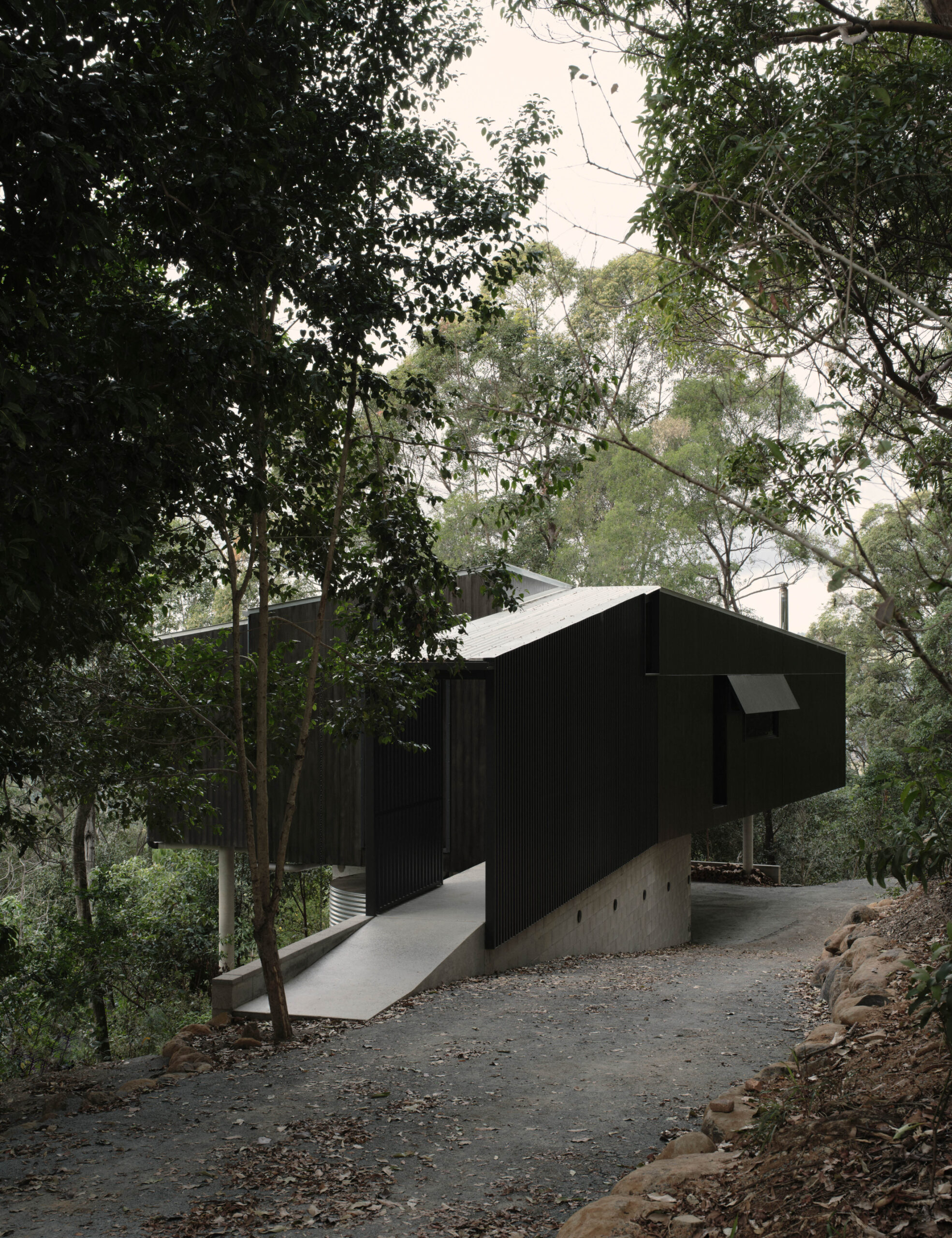There’s no one-size-fits-all model for multi-generational living, and this simple cabin hidden in the Gold Coast is another great example of thinking outside the box.
The owners of a 14-acre block in Tallebudgera, Kristie and James wanted to carve out a space where Kristie’s retired father, Kevin, could live beside them amongst a sea of tallowwood trees.
They engaged Fouché Architects director Rayne Fouché to execute this ‘joint venture’. ‘The brief was incredibly simple,’ Rayne says — yet he acknowledges Tallowwood Cabin as his practice’s most challenging project to date.
‘Kevin wanted a two-bedroom dwelling with enough covered deck space for a pool table. The other main requirement came in the form of site stewardship. They asked us and the builder to care for the site as much as they do.’
This meant avoiding clearing the native vegetation wherever possible. But balancing the rural site’s bushfire requirements with the preservation of the surrounding environment took some trial and error (over a 15-month-long design and documentation period) to get the plans across the line.
The property’s steep slope and lack of access posed an addition difficulty. ‘We had to set up the project to accommodate cars and people coming and going,’ Rayne adds. ‘We did this by running the driveway parallel with the site contours, gently descending down to its final location in the undercroft, which is where vehicles are parked.’
The undercroft also made room for a water tank and allowed the home to hover above ground below, limiting its impact on the landscape. Plus at just 84 square metres, the resulting residence contains much less embodied energy than the average house.
Every element was designed to respond to the position of existing trees, from the geometry of the floorplan to the subtle appearance of the facade.
‘The building form was conceived as a black linear extrusion hidden in the landscape. Due to extreme bushfire requirements (BAL-FZ for those in the know), we were limited to a few tested systems,’ Rayne says of the material palette. They ended up settling on black-stained fibre cement VJ cladding for the exterior, while the textural and cost-effective oriented strand board (OSB) lines most of the walls inside for a cocooning effect — drawing inspiration from the ‘spirit’ of an American log cabin.
‘On a sunny day, [the facade] reflects the green hues of the surrounding vegetation beautifully,’ he notes. ‘We’re most proud of how the cabin touches the ground lightly, and how it directly connects to the tree canopy
But Rayne says the most rewarding part of the project is that the cabin has created an opportunity for the family to live close to each other, and ‘look after each other into the future’.

